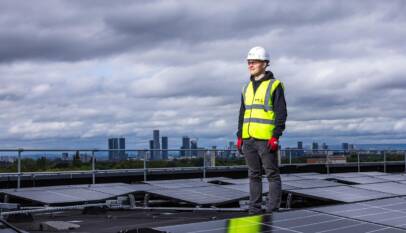
Solar power siding integrates photovoltaic technology directly into a building’s exterior walls, allowing it to generate electricity while serving as protective cladding. It offers a space-efficient alternative to traditional solar panels by combining energy production with the home’s outer structure.
This innovation can reduce electricity costs and increase a property’s energy independence without requiring additional rooftop space. Its growing popularity reflects advances in materials and installation methods that make solar siding more accessible and durable.
Understanding how solar power siding works and its potential benefits is key for homeowners and builders seeking sustainable energy solutions. It represents a practical step toward cleaner, more integrated renewable energy systems in residential and commercial buildings.
Solar Power Siding Fundamentals
Solar power siding integrates energy generation directly into a building’s exterior, combining functionality and design. Key considerations include how the system converts sunlight to electricity, the technology options available, and how it compares to traditional solar panels.
How Solar Power Siding Works
Solar siding uses photovoltaic (PV) materials embedded in exterior wall panels. These panels capture sunlight and convert it into direct current (DC) electricity. An inverter then changes DC to alternating current (AC) for use in the building’s electrical system.
The siding connects to the home’s wiring, allowing generated electricity to power appliances or feed excess energy back into the grid. The panels are designed to withstand weather conditions while maintaining energy efficiency. Proper installation ensures maximum sun exposure and optimal performance.
Types of Solar Siding Technologies
There are mainly two types: thin-film solar siding and crystalline silicon solar siding. Thin-film siding is flexible, lighter, and easier to install but generally less efficient. Crystalline silicon siding offers higher efficiency and durability but can be thicker and more rigid.
Certain solar sidings use building-integrated photovoltaics (BIPV), blending seamlessly with architectural elements. This may include colored or textured panels that mimic traditional siding materials like wood or metal. Selection depends on aesthetic preference, budget, and energy goals.
Solar Siding vs. Traditional Solar Panels
Solar siding serves as both a building material and energy generator, replacing conventional siding. Traditional solar panels are typically mounted on rooftops as separate units. Solar siding can reduce the need for additional mounting structures.
Efficiency-wise, roof-mounted panels usually produce more energy due to optimal positioning and larger surface area. However, solar siding offers streamlined installation and aesthetic integration. Cost per watt may be higher for siding, but it adds to a building’s envelope without extra attachments.
Planning and Installation Considerations
Successful implementation of solar power siding depends on evaluating the home’s suitability, following precise installation steps, and understanding ongoing maintenance needs. These factors ensure optimal energy output and system longevity.
Assessing Home Suitability
Not every home is ideal for solar power siding. Factors such as roof orientation, shading from trees or buildings, and the home’s structural condition significantly impact performance.
South-facing walls receive the most sunlight, making them prime locations. If shading reduces sunlight by more than 25%, the efficiency can drop substantially. Homes with older siding or structural issues might require repairs before installation.
Evaluating local climate patterns is crucial. Areas with consistent sunlight yield better results. Finally, homeowners should check local regulations or homeowners’ association rules that might restrict exterior modifications.
Professional Installation Process
Installation begins with a thorough site assessment. Professionals measure wall dimensions, inspect electrical systems, and determine the best panel layout for maximum sunlight exposure.
Installation involves removing existing siding, mounting solar panels integrated with siding materials, and connecting the system to the home’s electrical grid. Proper sealing and insulation during this phase prevent moisture intrusion and energy loss.
Licensed electricians handle wiring to ensure compliance with safety codes. The process usually takes several days, depending on home size and complexity. Post-installation inspections verify system integrity and connection to the utility grid.
Maintenance and Performance
Solar power siding requires minimal maintenance but regular inspection is essential. Cleaning panels periodically removes dirt and debris that could hinder energy absorption.
Professionals recommend inspecting seals and mounting hardware annually to prevent water damage. Monitoring system output through a digital interface helps identify performance drops.
Over time, panels may degrade and lose efficiency at a rate of about 0.5% per year. Promptly addressing any electrical or structural issues ensures consistent energy production and prevents costly repairs.
House for Sale at Mississauga: Top Listings and Market Insights
Many buyers are interested in finding a house for sale in Mississauga due to its diverse n…








